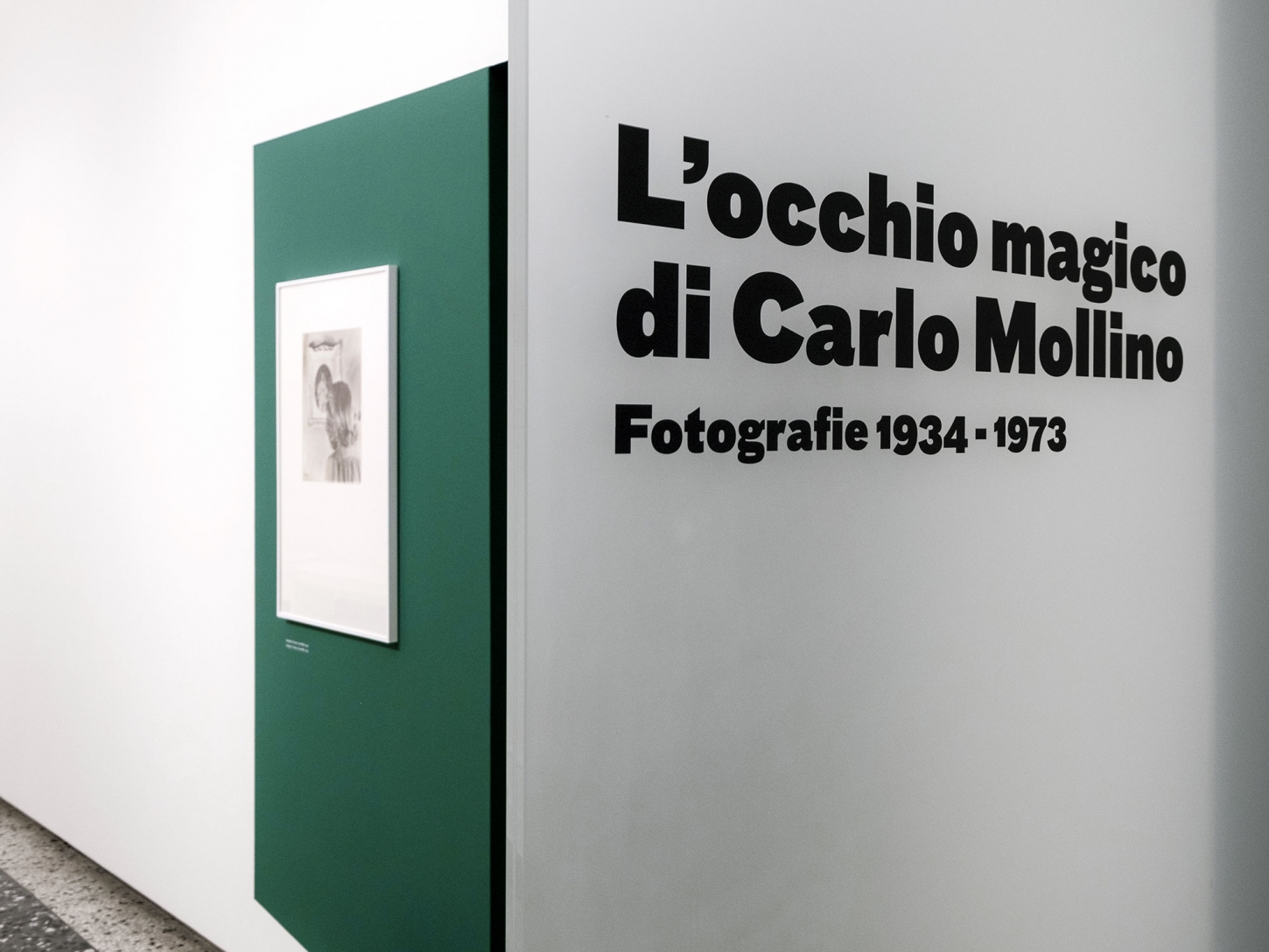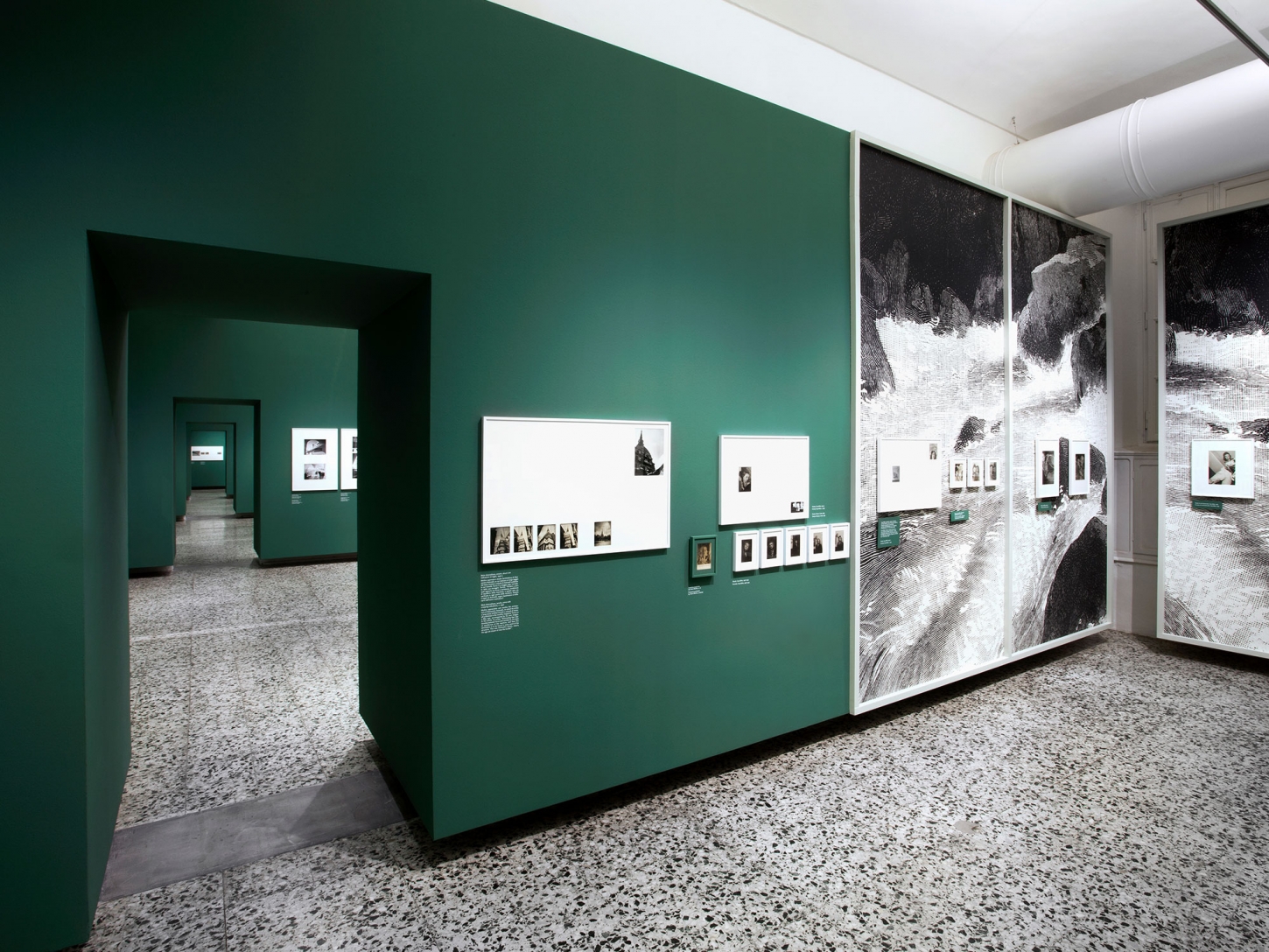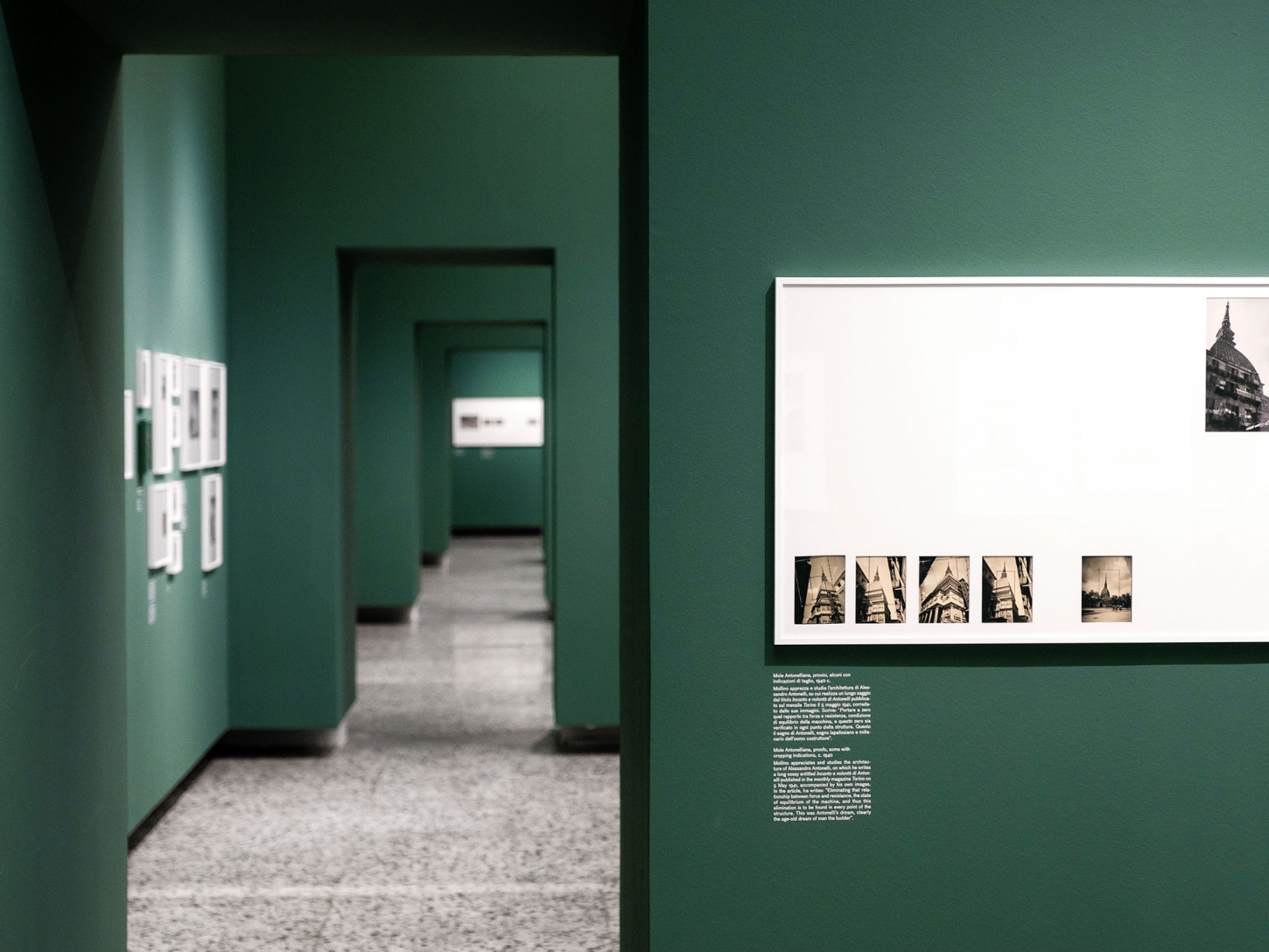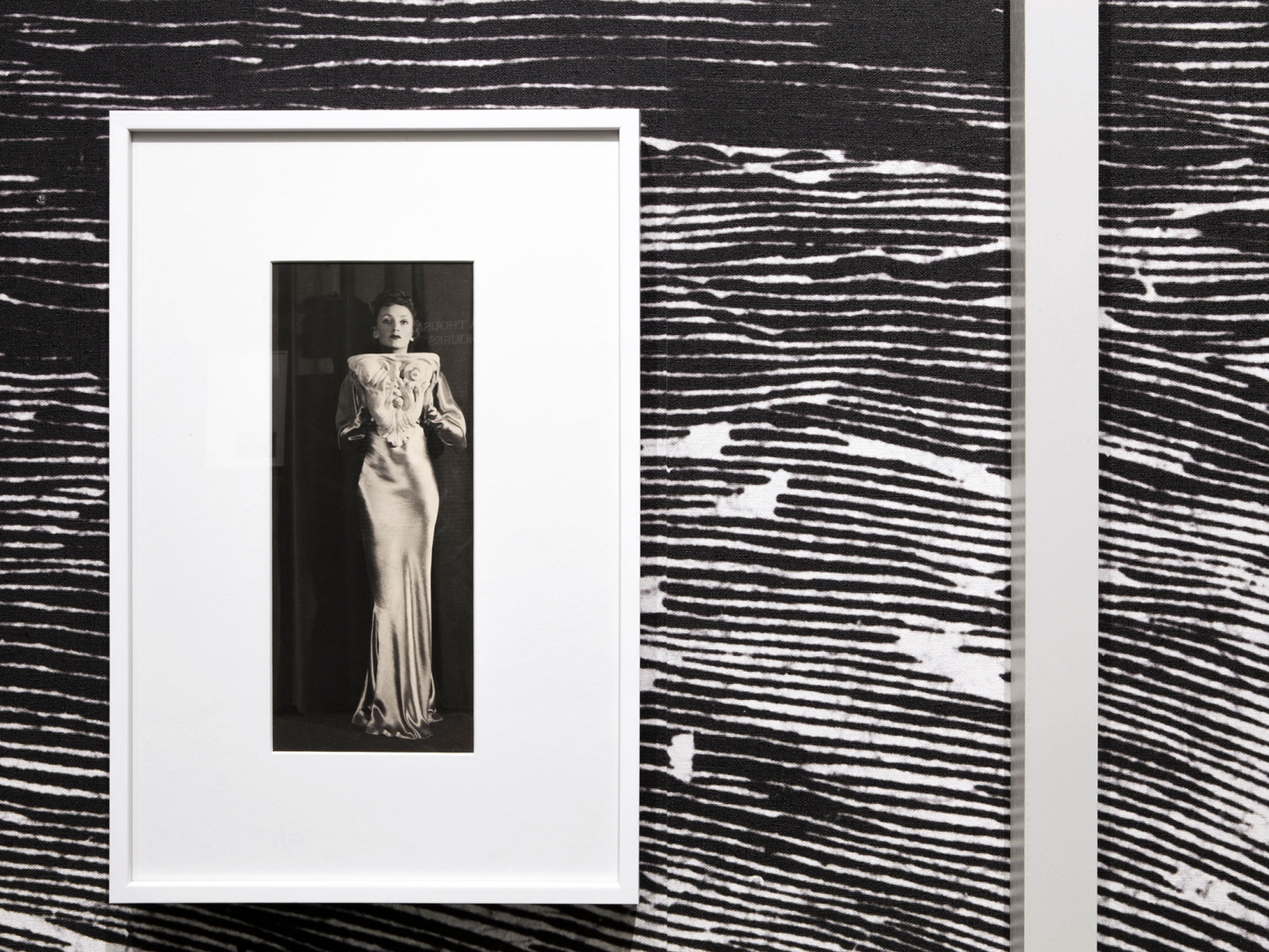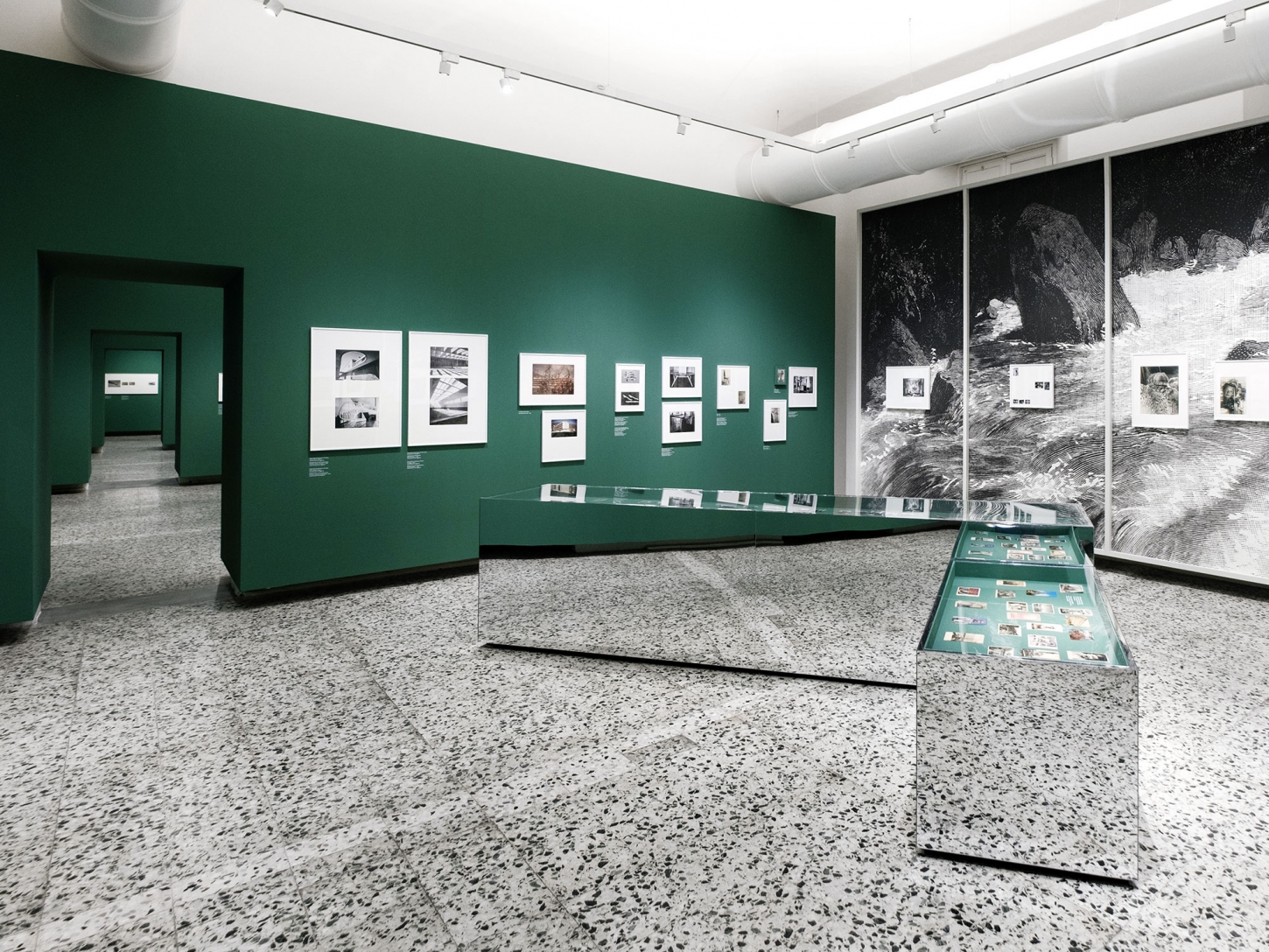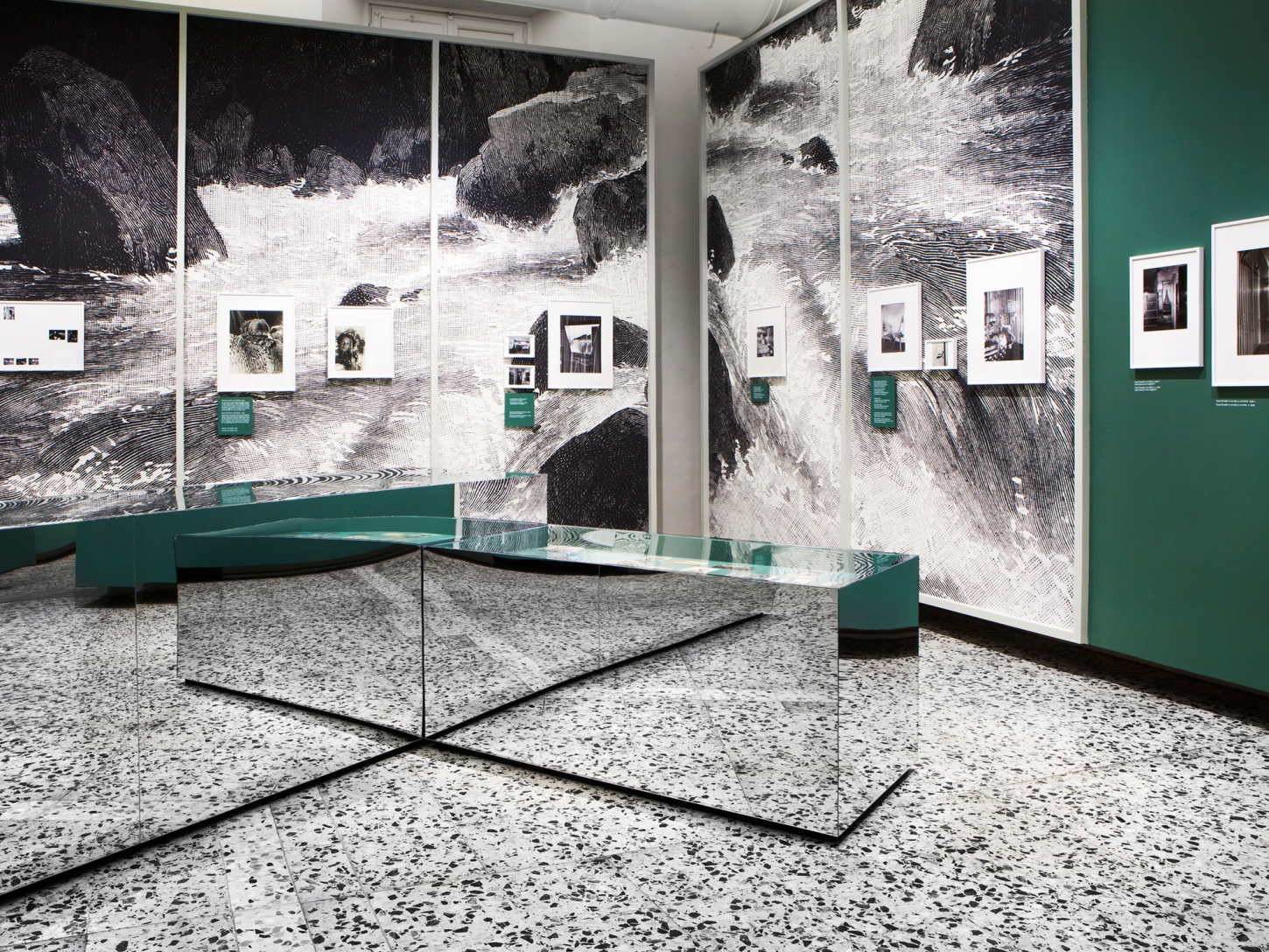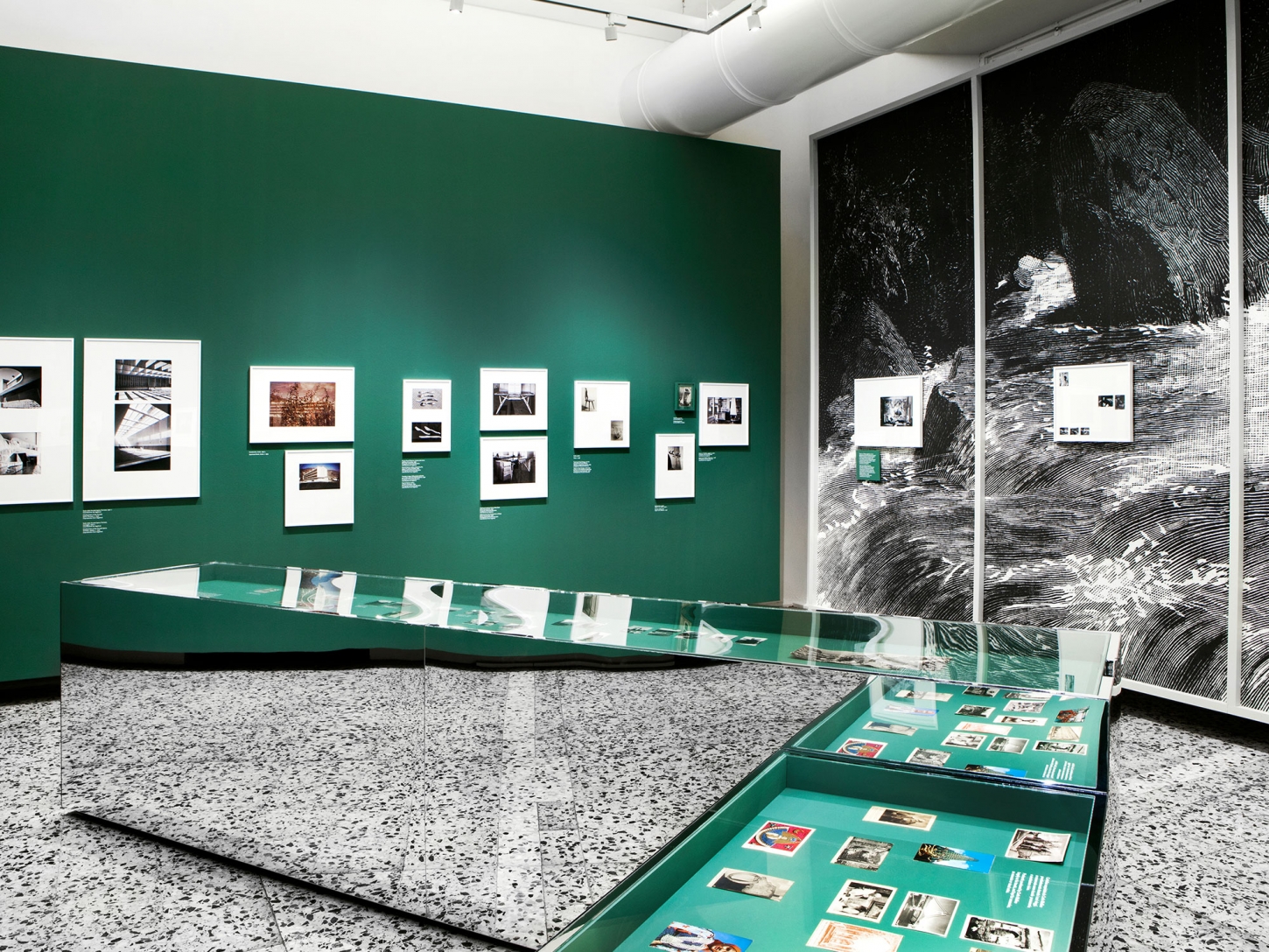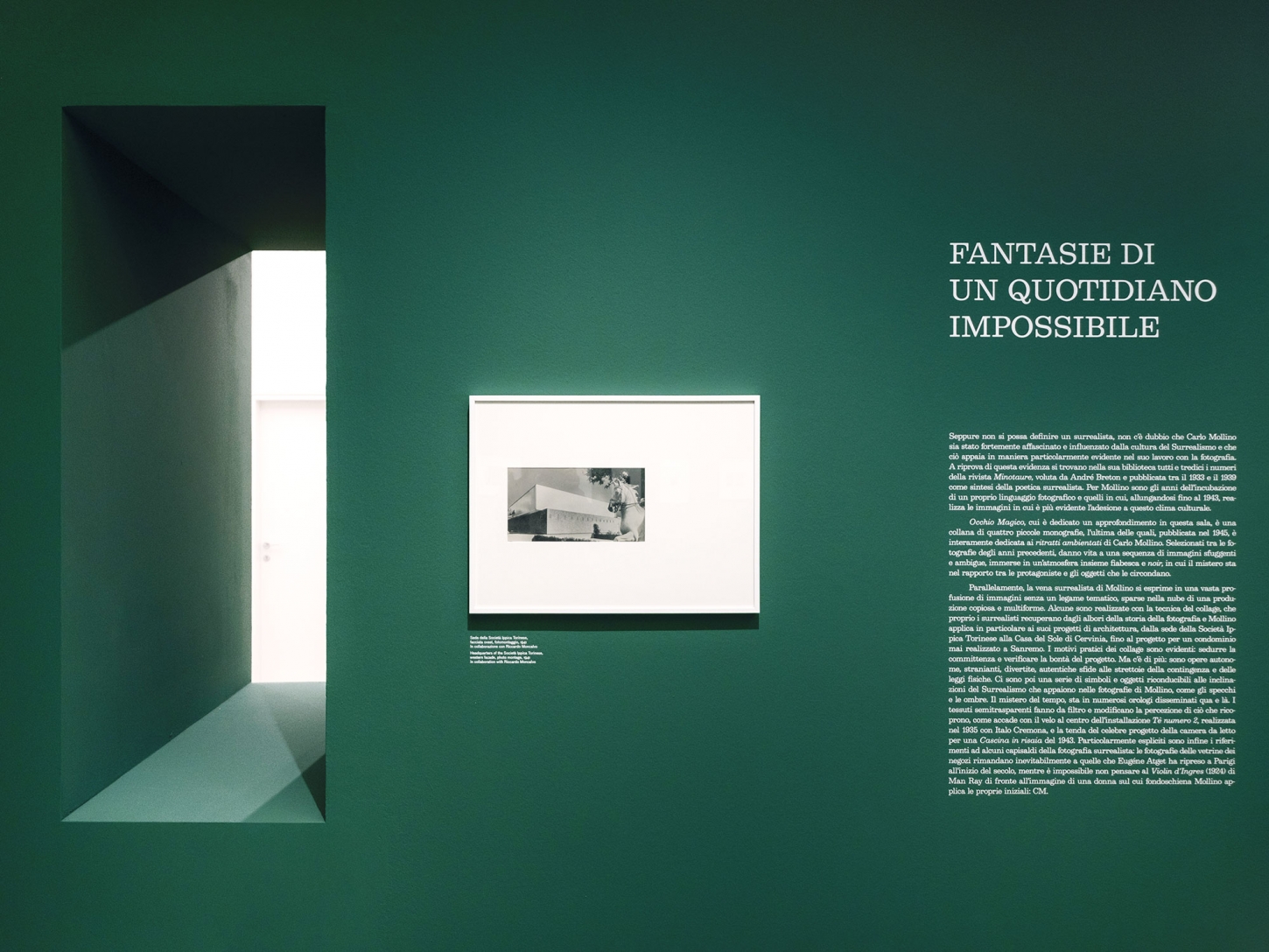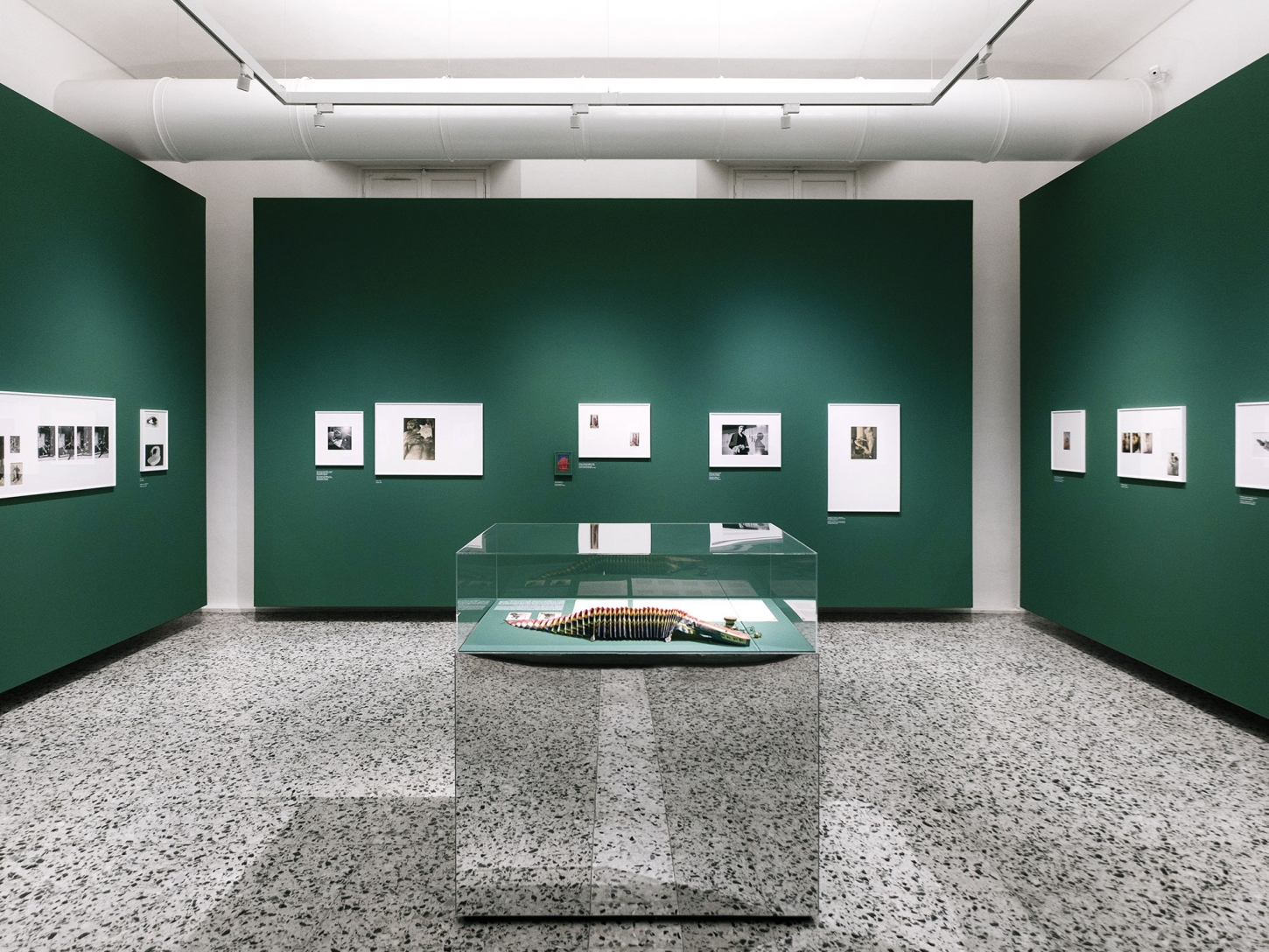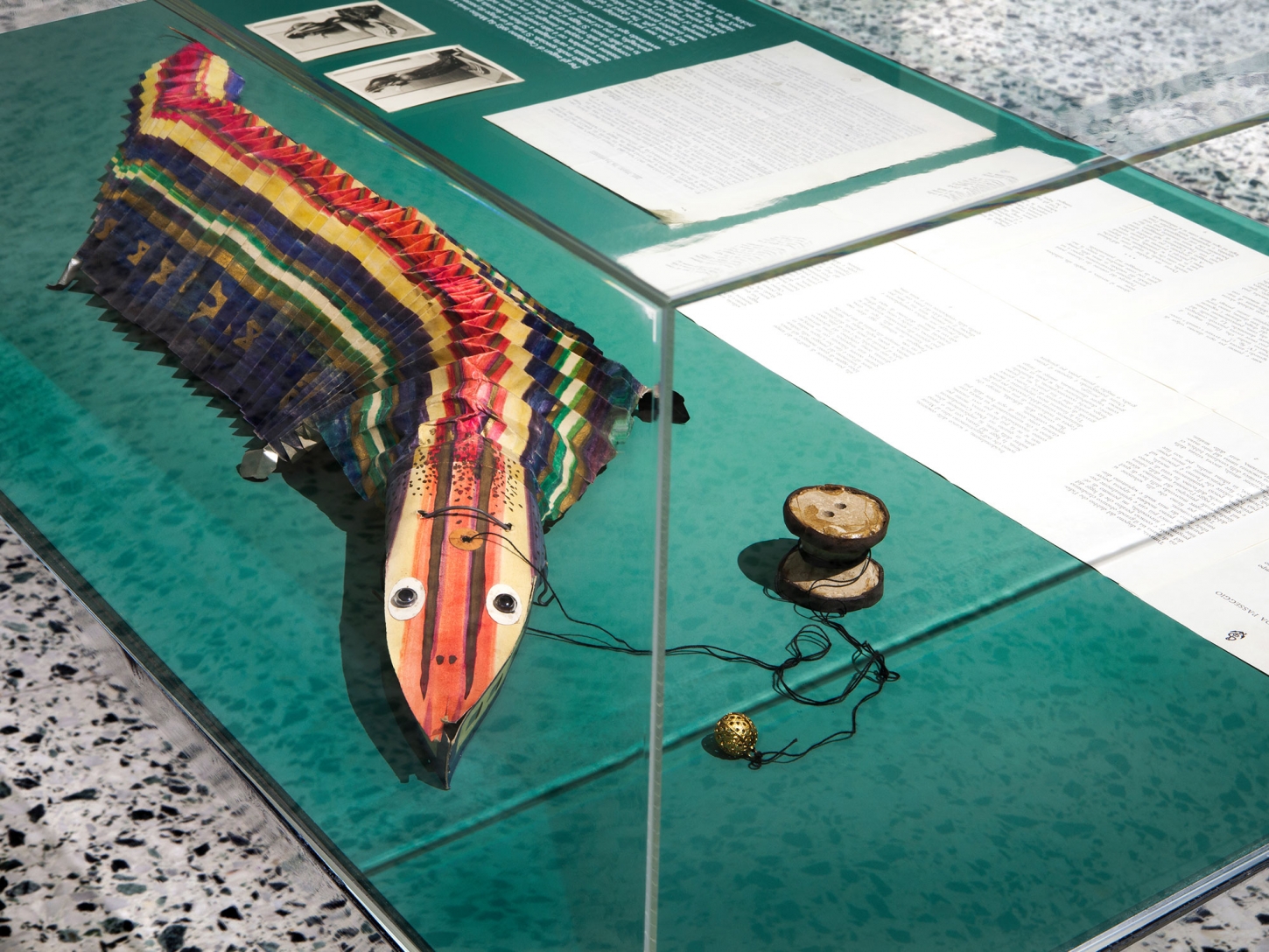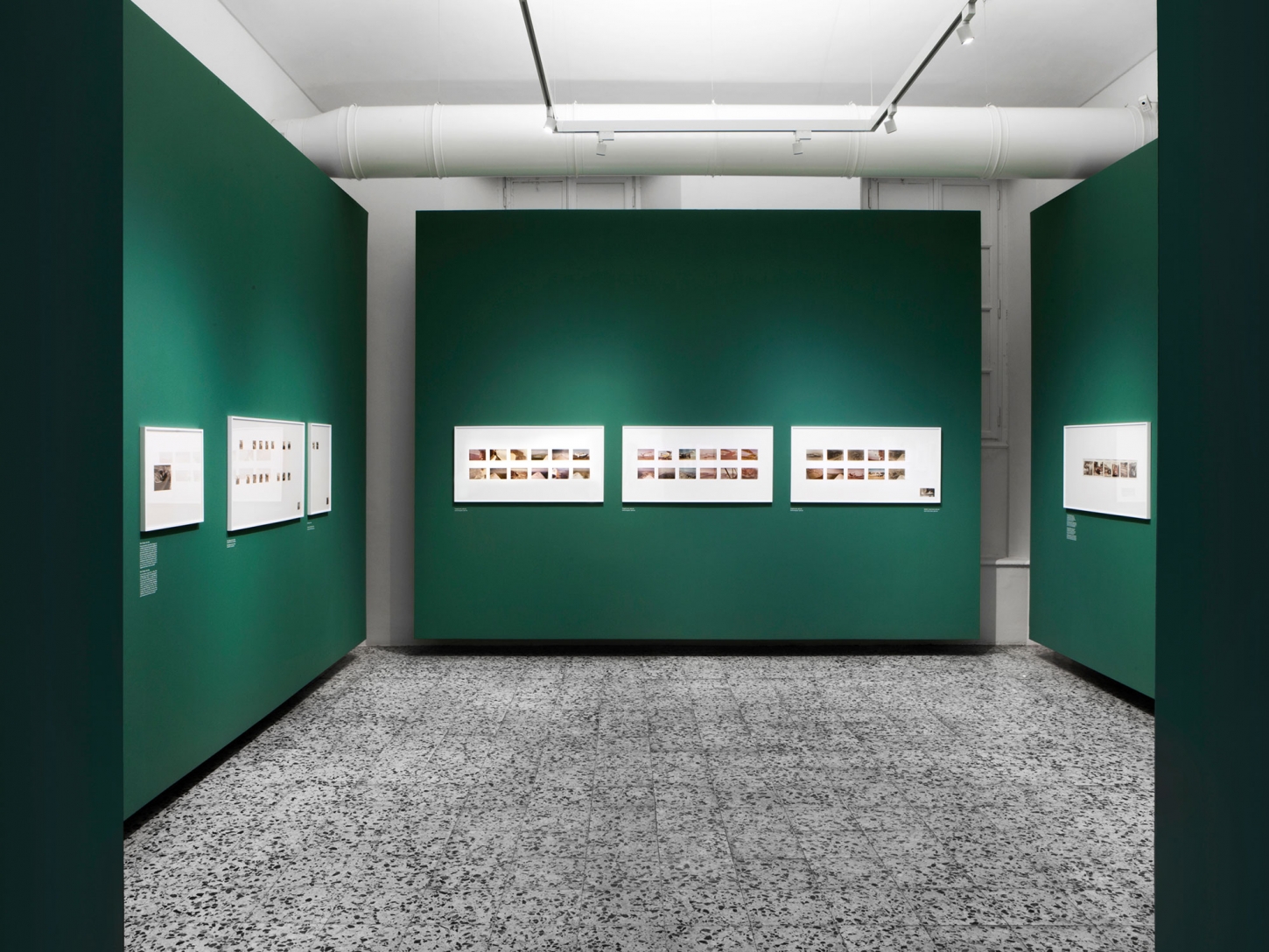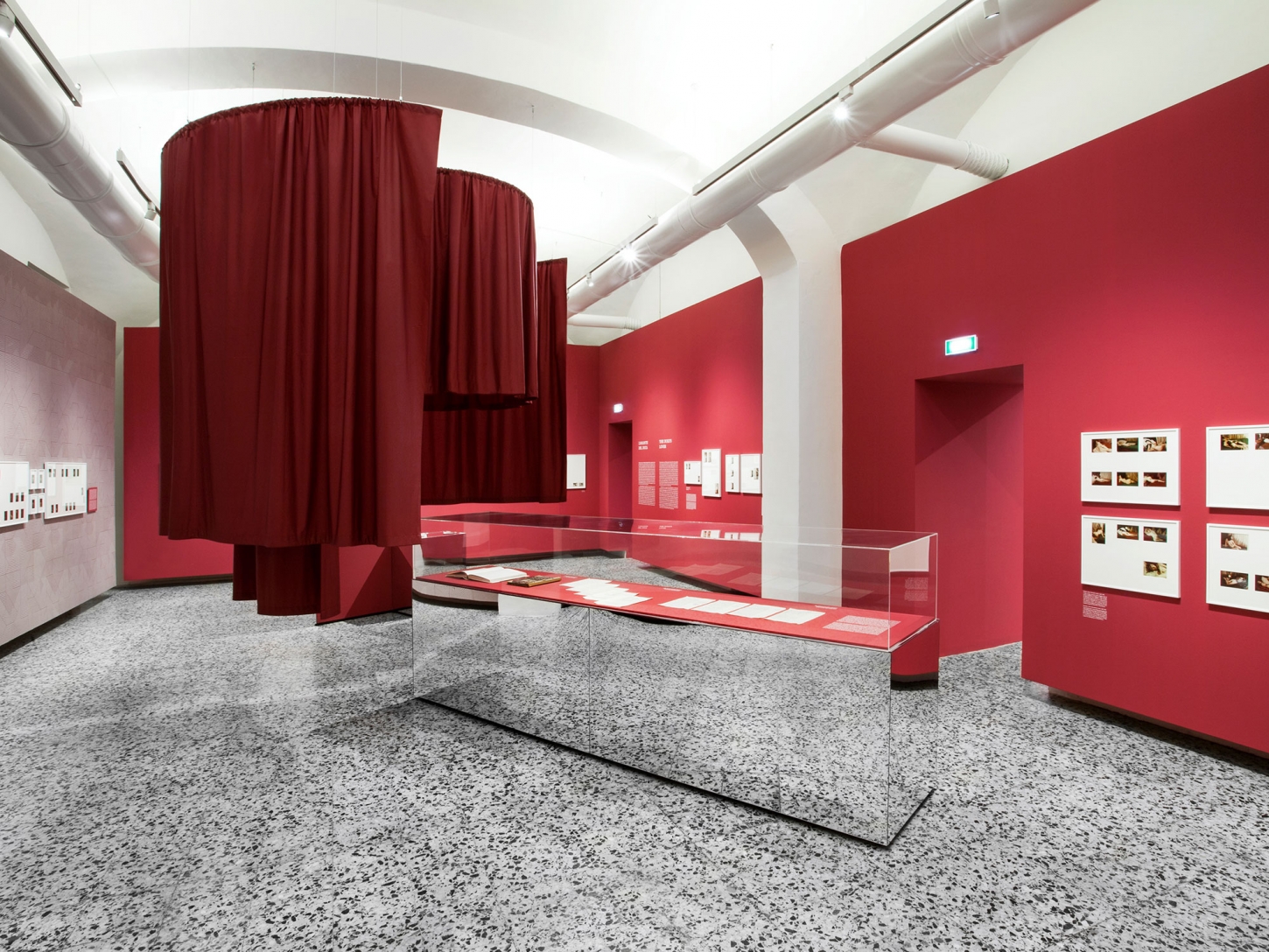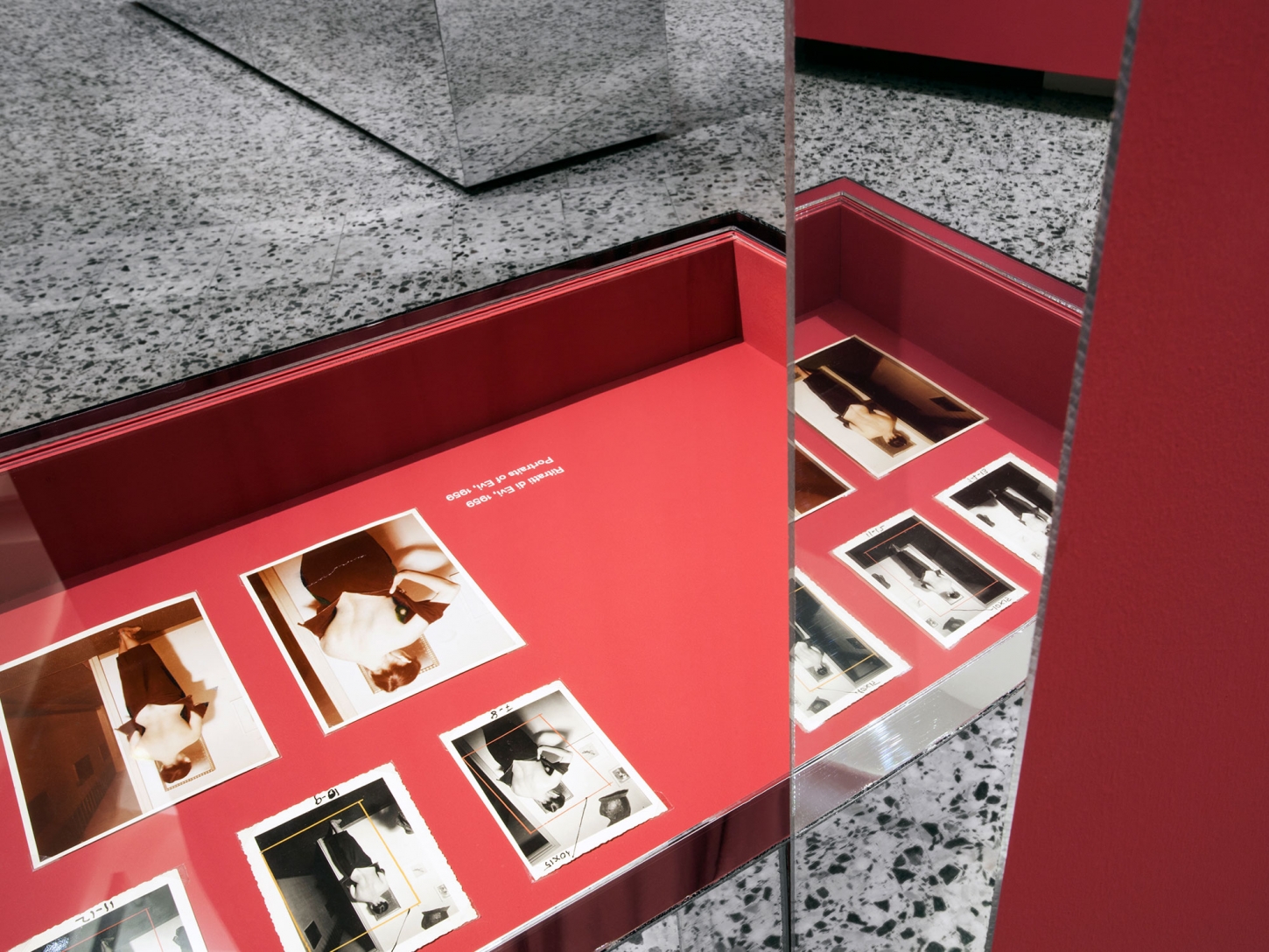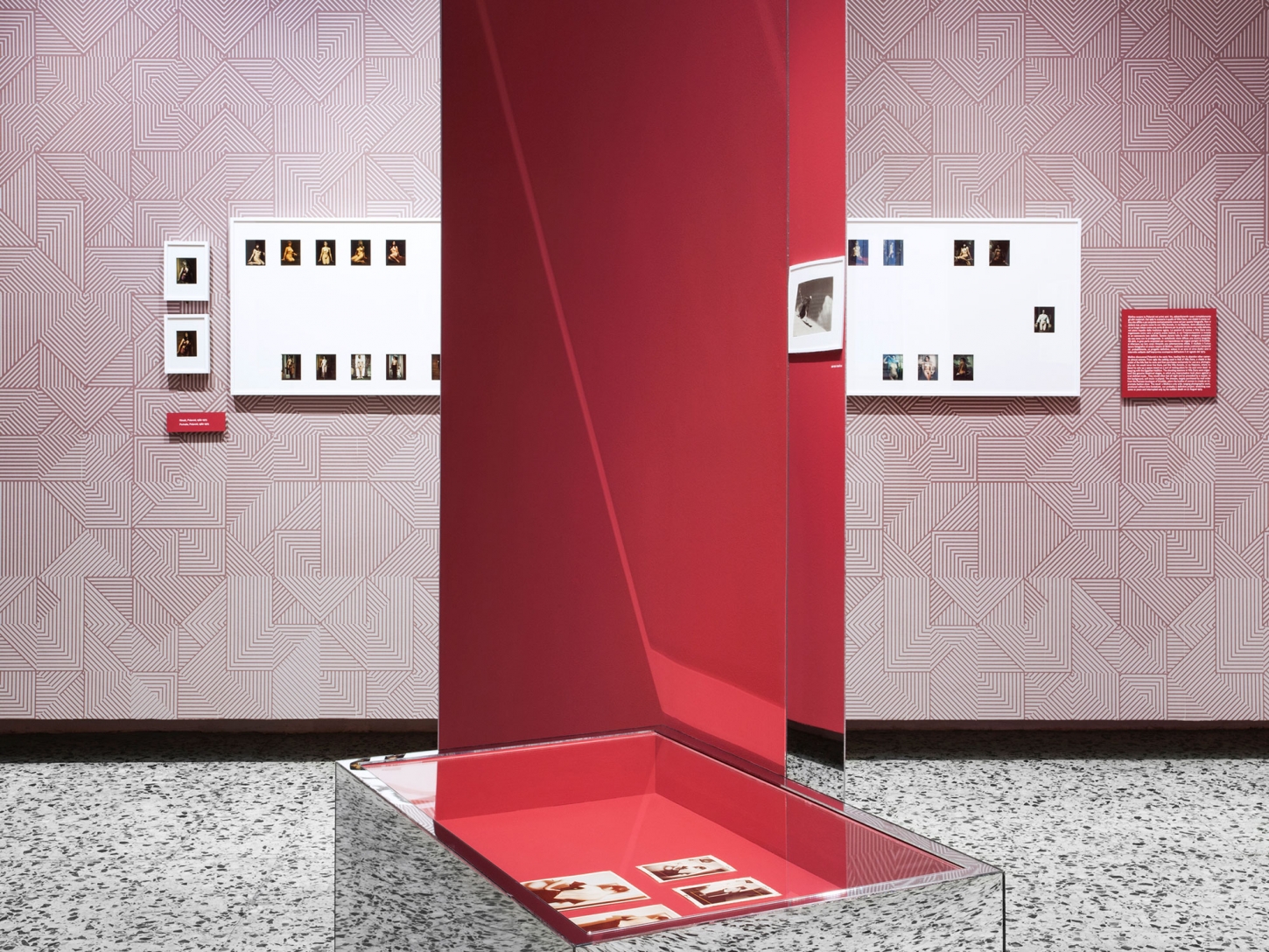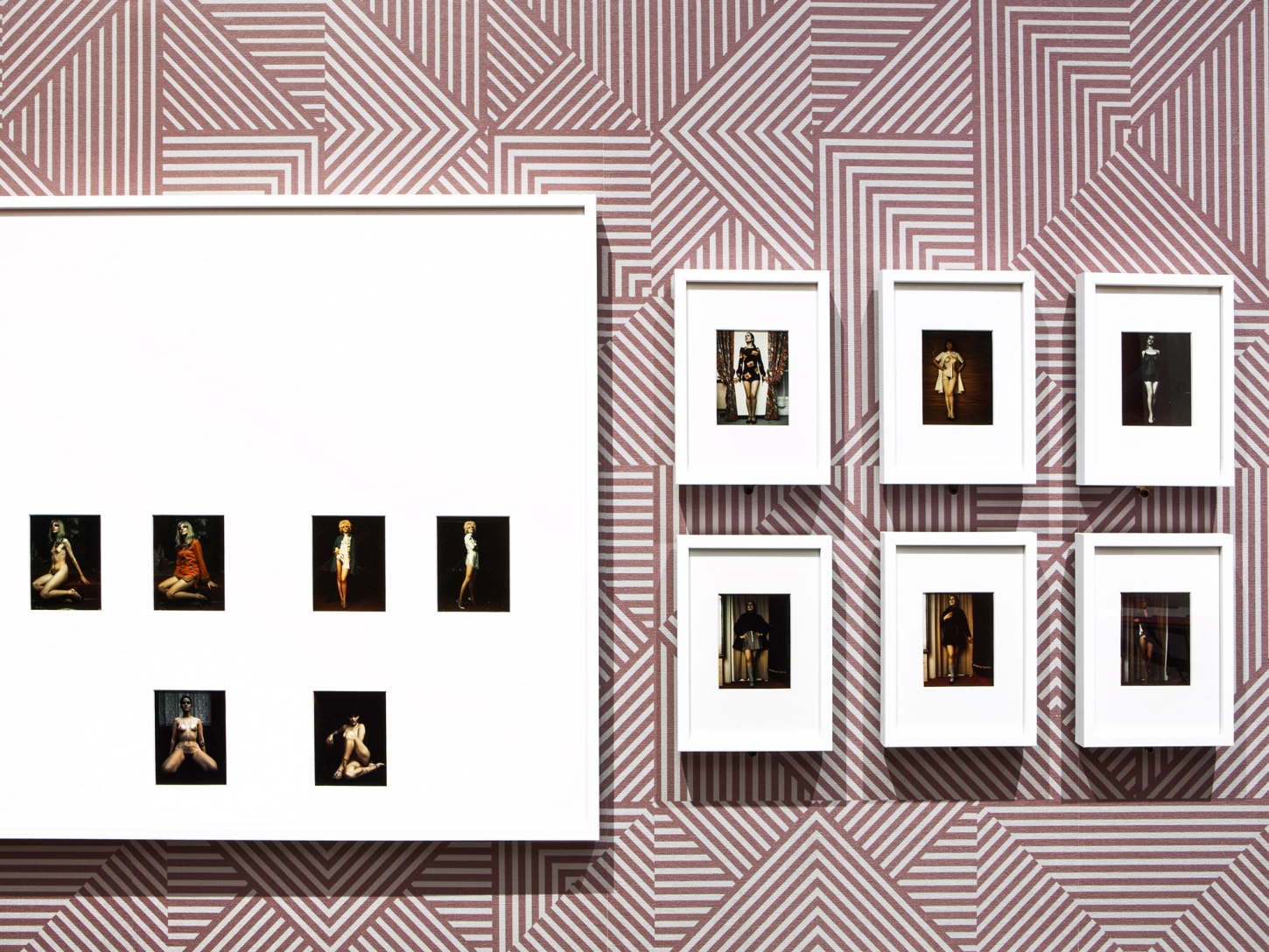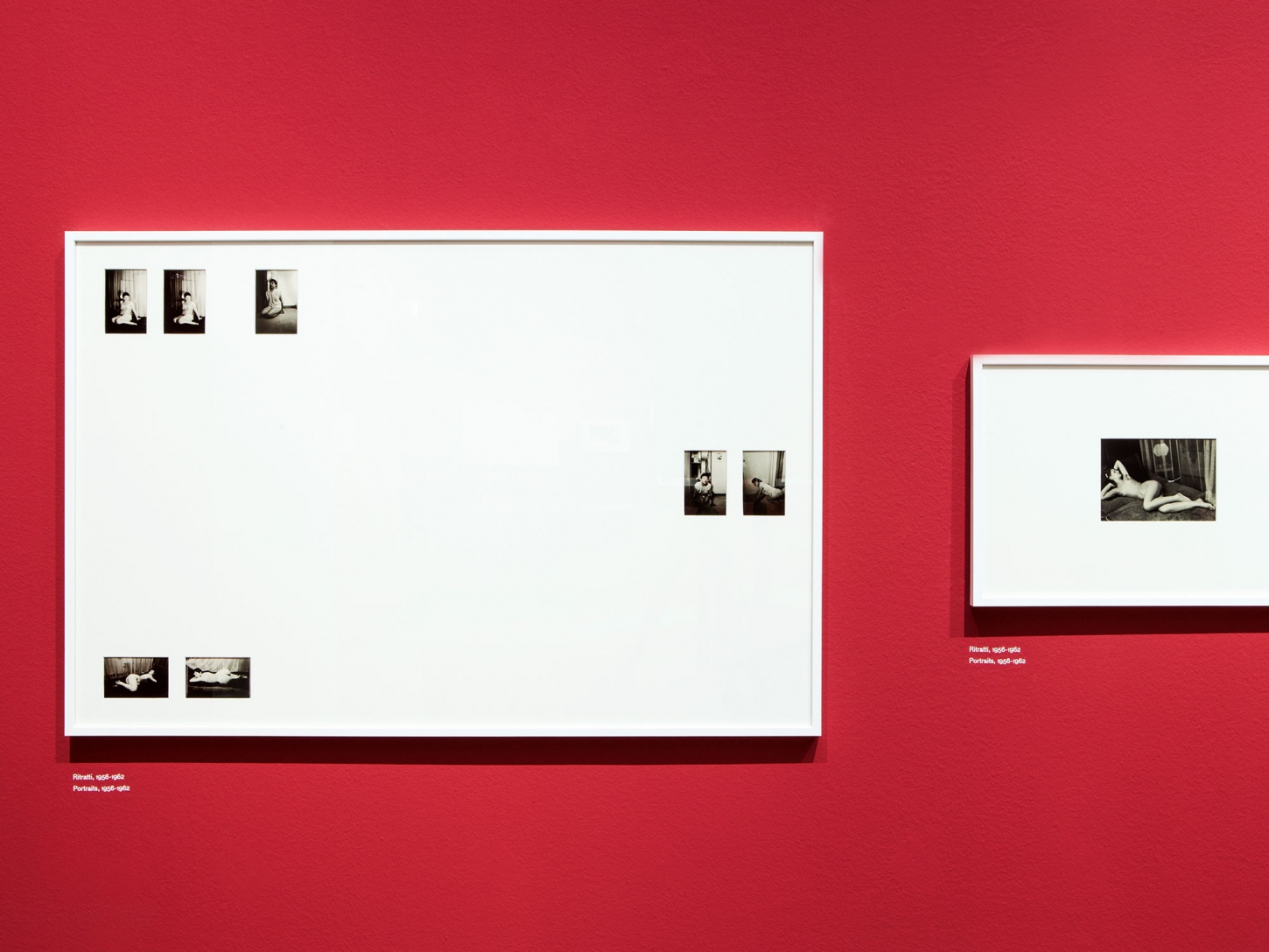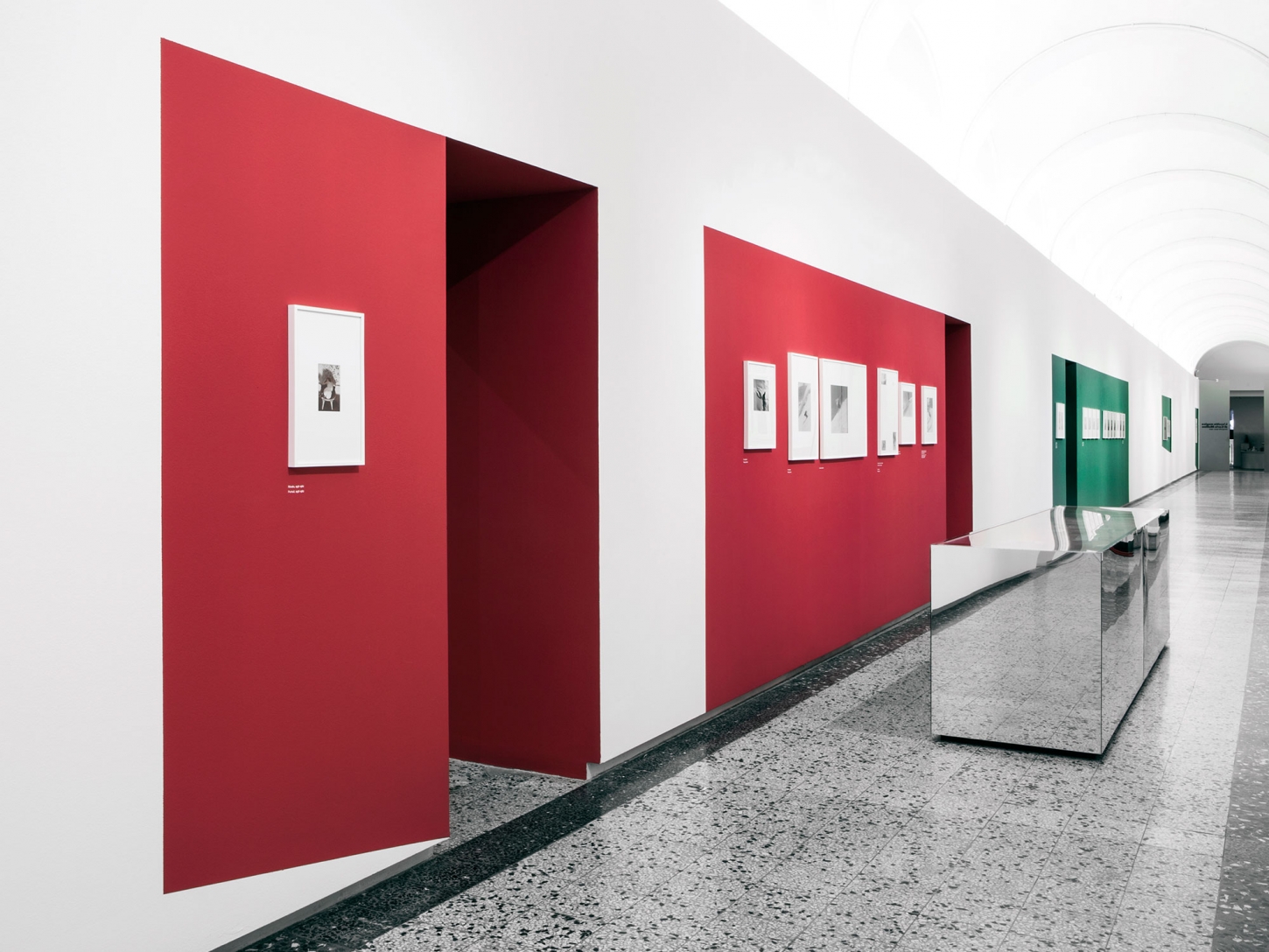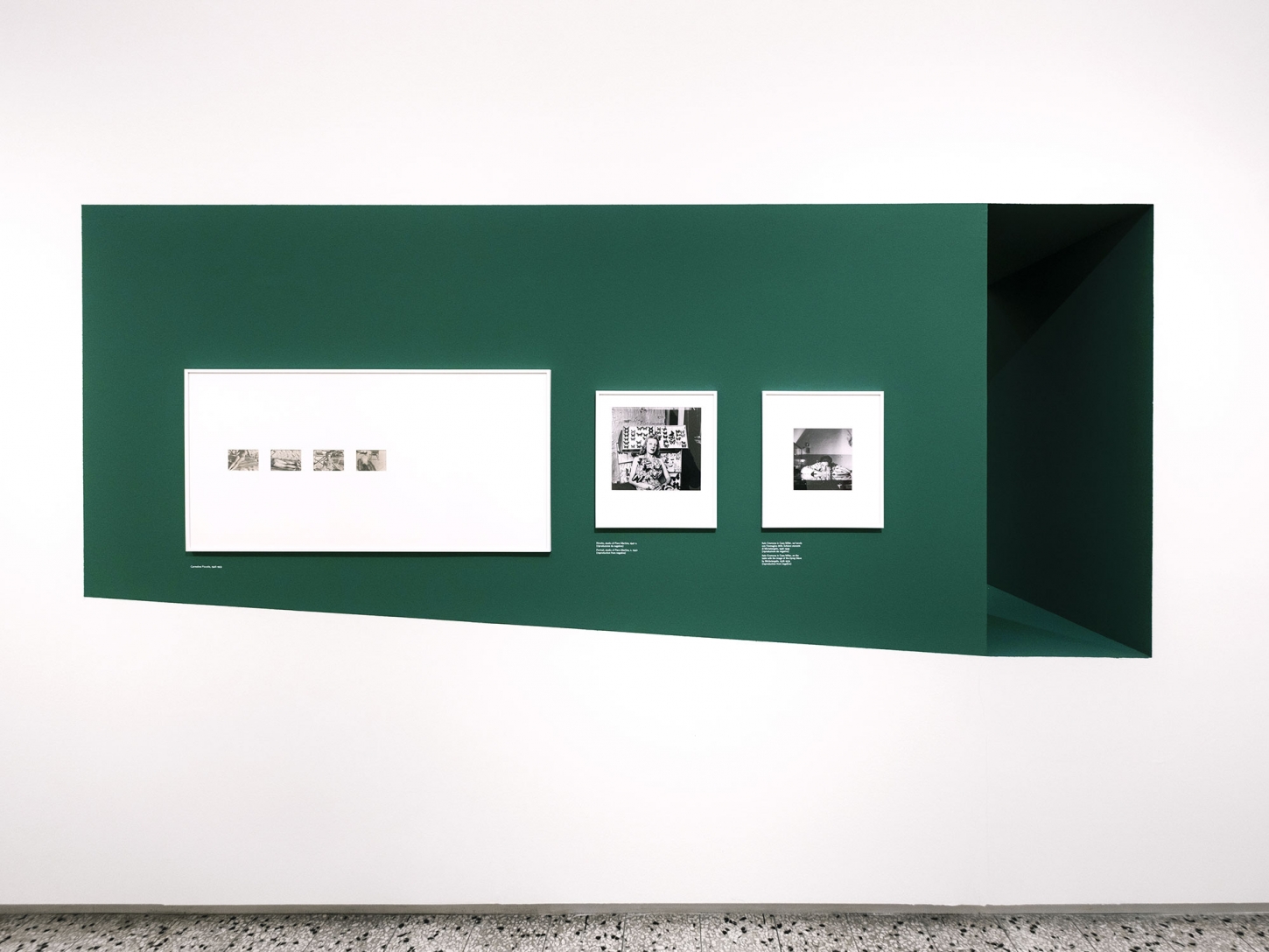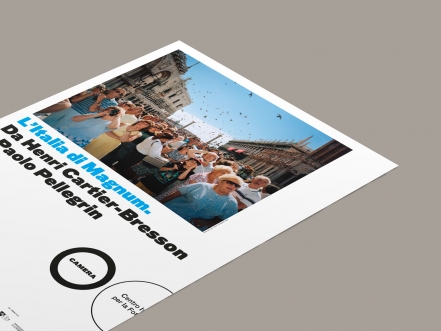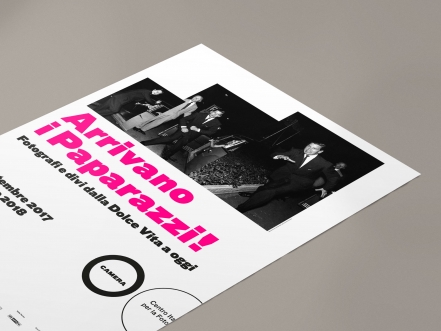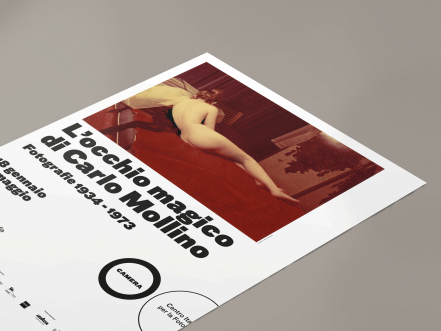Camera
L’occhio magico di Carlo Mollino
Planned in keeping with a criterion of strict and linear compositional simplicity, this work examined the multi-faceted work of Carlo Mollino, drawing inspiration from four symbolic themes essential to his repertory of inventions.
Colour
Making use of archive photographs as a source of testimony and means of analysis, we considered a series of colour shots of the interiors designed, organised and “staged” by Mollino, with a view to evaluating his chromatic preferences. As well as white, present throughout, our research shows that red and green are the dominant hues on the architect’s expressive palette.
The adoption of this trio of colours to characterise the surfaces along the exhibition itinerary serves to evoke the warmth and atmospheres of several of Mollino’s interiors; the succession of exhibition rooms thus offers a range of chromatic-perceptive frequencies which, against the neutrality of white, features the enveloping and leaden depth of green and the acute sensuality of red.
Reflection
The theme of the reflection, or of the mirrored, multiple repetition, is one of the hallmarks that characterises Mollino’s work in architecture and interiors; in the furnishings of the drawing room of Casa Miller, the first experimental workshop of his compositional thought, the perturbing flat silhouette of Venus hanging is a polarising reflective presence; from that moment onwards, the use of the estranging multiplication of images that the shiny surface of the mirror offers emerges in a range of project applications.
The glass cases to be found along the exhibition path, standing to form elementary geometric shapes as pure prisms, pay homage to Mollino’s almost obsessive preference for reflective surfaces; hence, these all-reflecting display cases, by dematerialising their own presence, amplify the space around them.
Backdrops
The background walls with decorative images are another element of special interest in Mollino’s expressive language. The subjects featured, taken largely from illustrations and graphics of the day, are landscapes or environmental glimpses that Mollino – often with the contribution of Riccardo Moncalvo – transferred onto the large scale using rolls of photographic paper: a technique which, for the time, was highly refined and technically innovative.
In the exhibition, the theme is interpreted by the transferal onto wallpaper of two specific subjects, created especially for the occasion. In the first two rooms of the display path, we come across the natural scene originally proposed by Mollino for the drawing room of Casa Orengo: the black & white image of a stream gushing between jutting rocks is given a new dimension here and an original horizontal development. In the last room of the exhibition, the decoration painted onto the proscenium and ceiling of the main hall of the Regio Theatre is the inspiration for the original drawing of a complex two-colour graphic pattern.
Drapery
Textile drapery, presented as furnishing curtains, is a crucial presence in many of the interiors conceived by the Turinese architect; these upsweeping fabrics are an element both functional and decorative at the same time, which dress the architecture, endowing it with a soft, enigmatic component.
Pictures by Andrea Guermani & Tullio Deorsola
